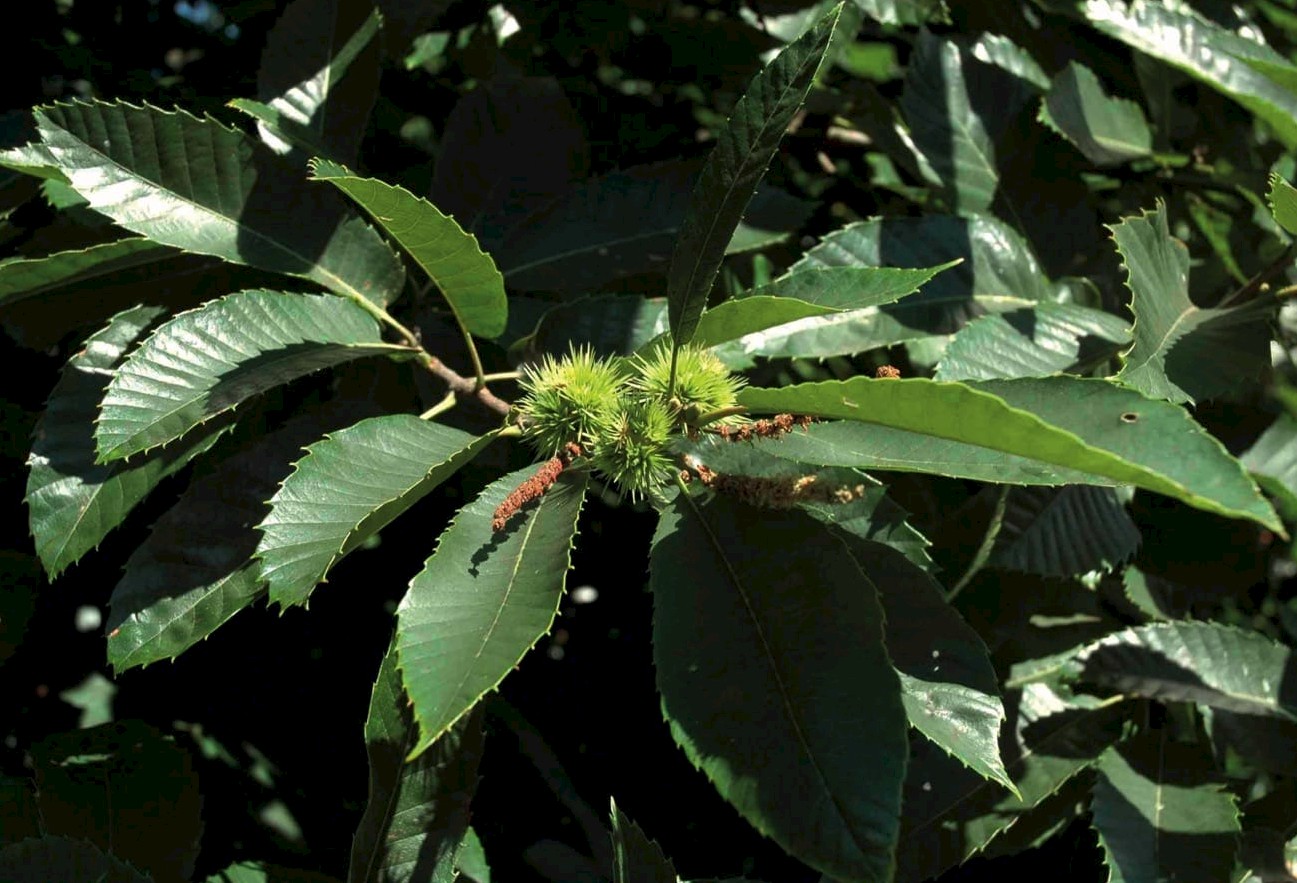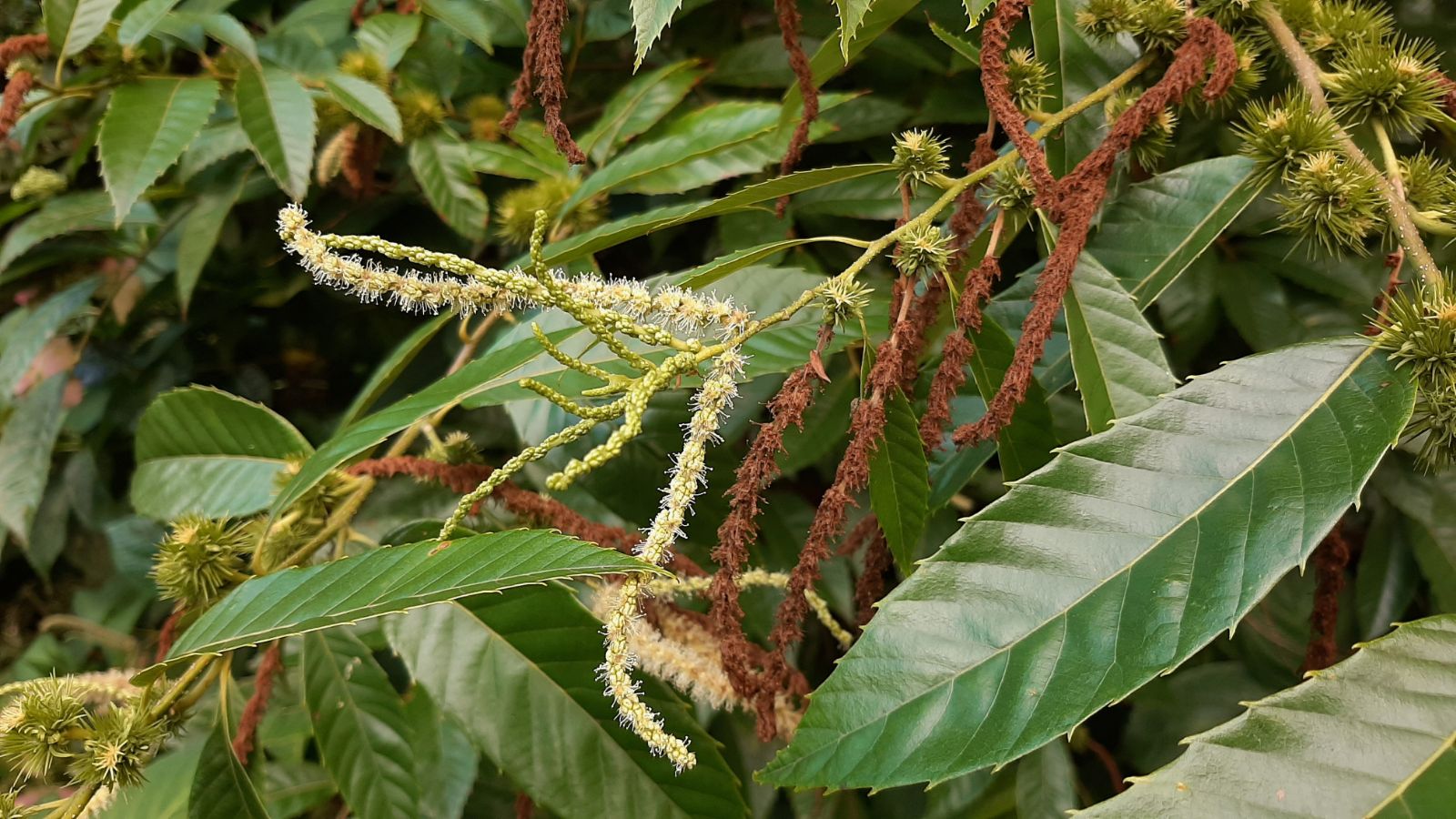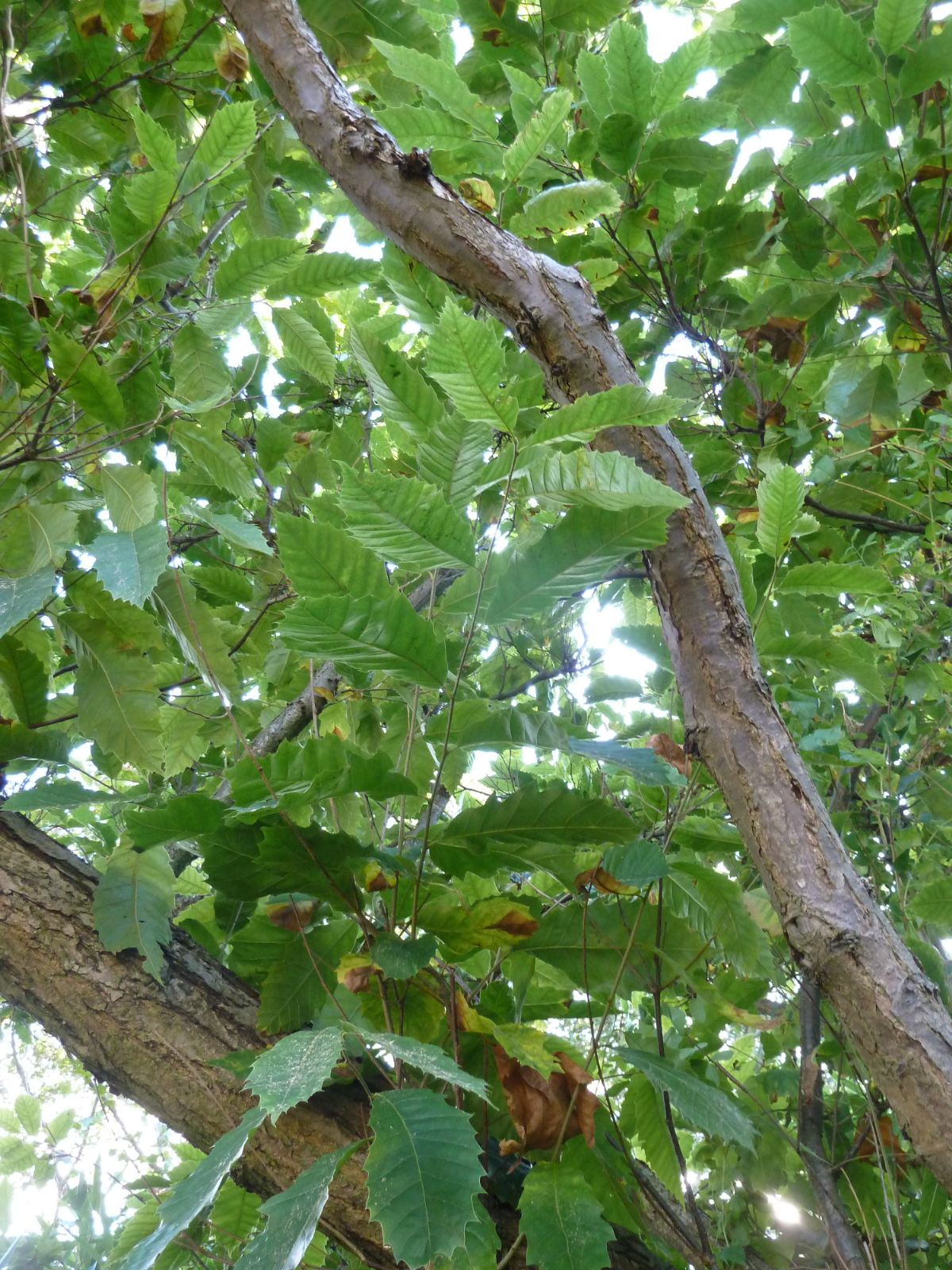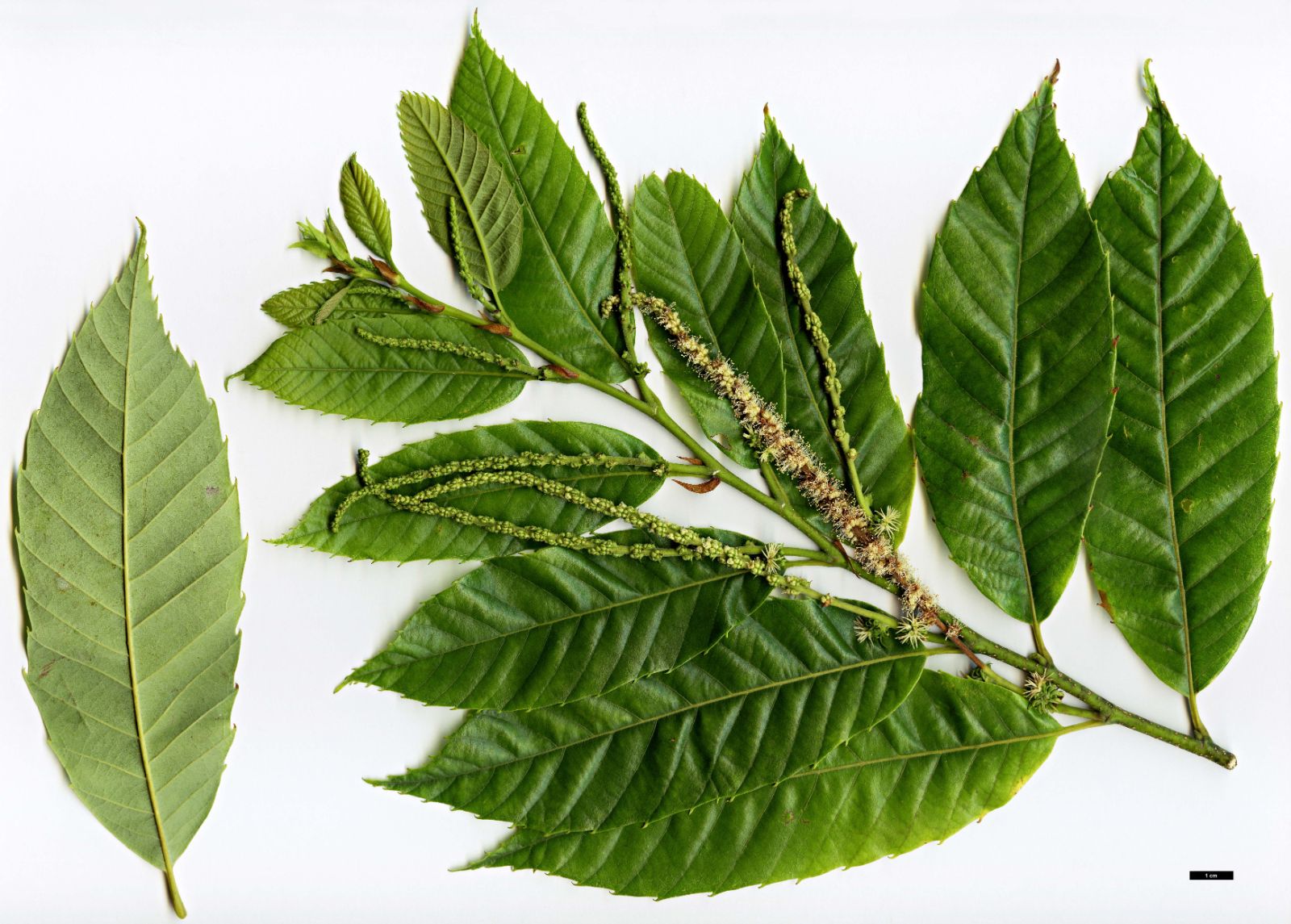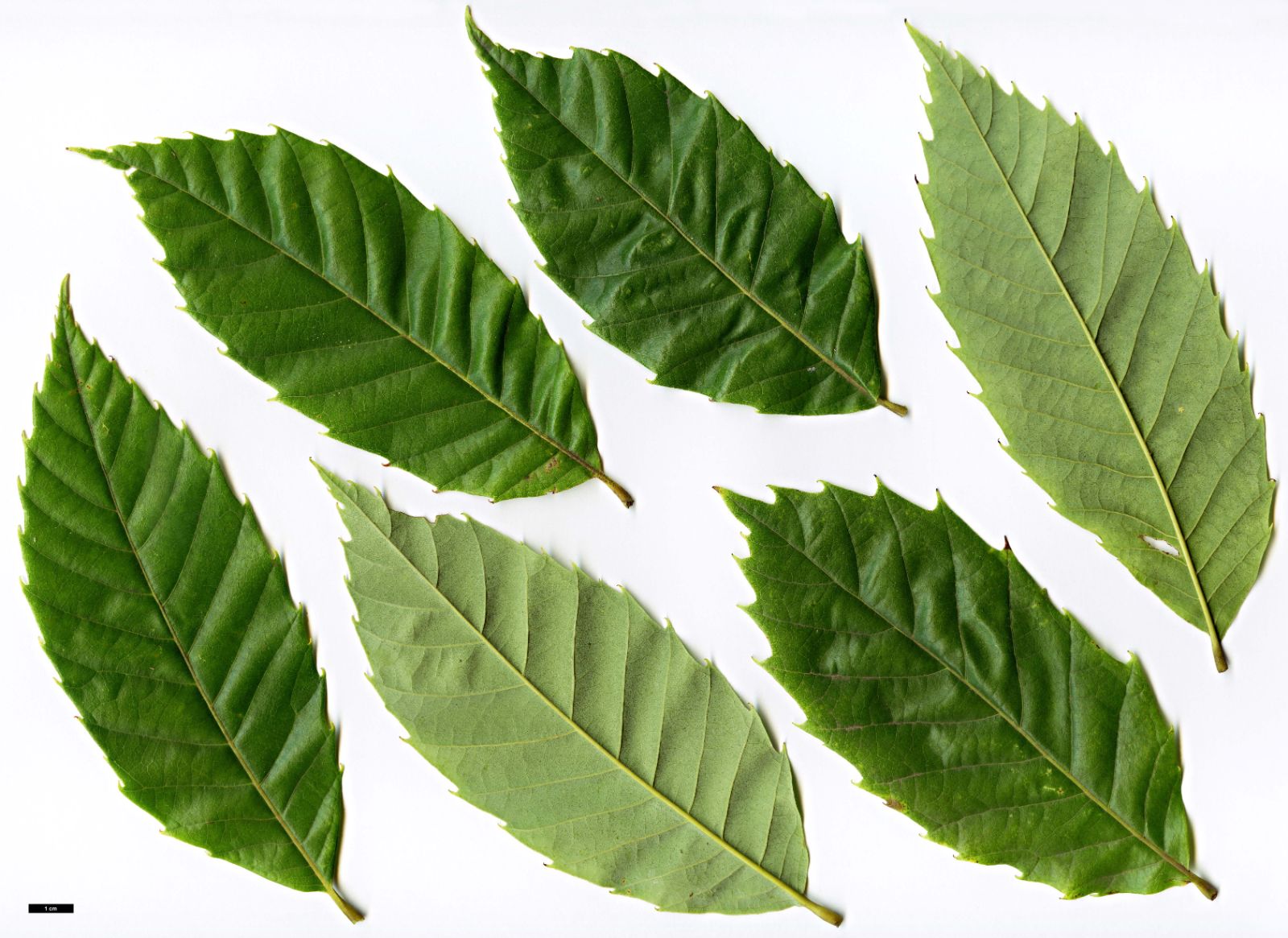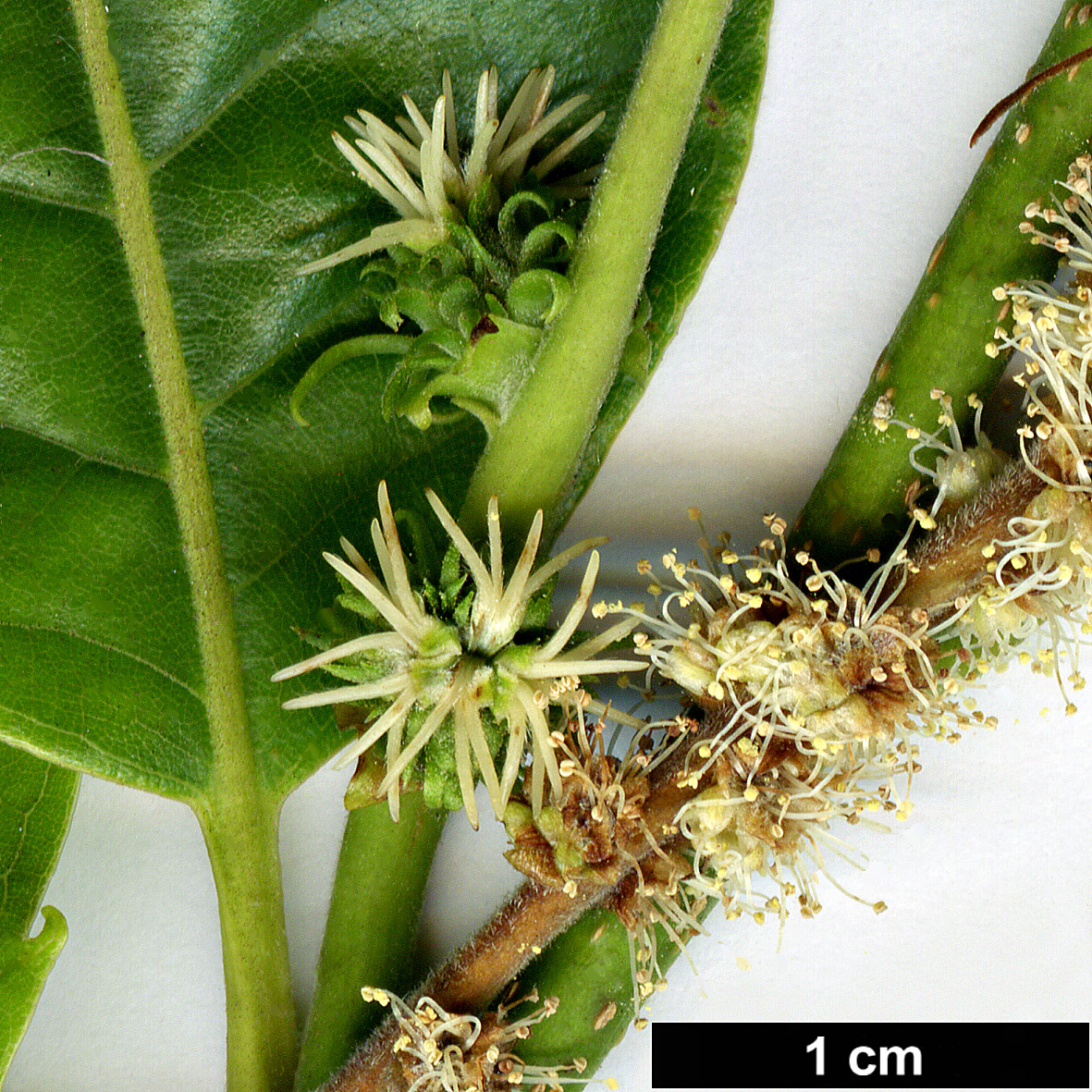Castanea seguinii
Credits
Article from New Trees by John Grimshaw & Ross Bayton
Recommended citation
'Castanea seguinii' from the website Trees and Shrubs Online (treesandshrubsonline.
Genus
Common Names
- Chinese Chinquapin
- Chinese Dwarf Chestnut
- Seguin's Chestnut
Synonyms
- Castanea davidii Dode
Shrub or tree to 12 m. Leaves deciduous, 6–14 × 3–5(–7) cm, oblong or obovate to elliptic, upper surface glabrous, lower surface covered with yellowish brown scale-like glands and sparse hairs along the veins (when young), 10–15 secondary veins on each side of the midvein, margins coarsely serrate, apex long-acuminate; petiole 0.5–1.5 cm long; stipules lanceolate, 0.7–1.5 cm long, falling when in fruit. Staminate inflorescences catkin-like, 5–12 cm long. Pistillate flowers solitary or few per cupule; cupule 3–5 cm diameter, covered with spine-like bracts, 0.6–1 cm long. Nuts two to three, 1.5–2 cm diameter. Flowering May to July, fruiting September to November (China). Huang et al. 1999. Distribution CHINA: Anhui, Fujian, Guangdong, Guangxi, Guizhou, Henan, Hubei, Hunan, Jiangsu, Jiangxi, Shaanxi, Shanxi, Sichuan, Yunnan, Zhejiang. Habitat Mixed mesophytic forest, thickets and orchards between 400 and 2000 m asl. USDA Hardiness Zone 6. Conservation status Not evaluated. Illustration Huang et al. 1999; NT216. Cross-references B530, K292.
Mentioned by Bean (1976a) as a relative of the American Castanea pumila (L.) Mill., C. seguinii has been cultivated at Kew since 1942, when a specimen was donated by Hillier & Sons. This specimen was 10.05 m in 1970 (Kew database), and is now 18.9 m tall (1.21 m dbh), with a spread of 18 m (T. Kirkham, pers. comm. 2007). It therefore slightly exceeds the recognised British champion at Borde Hill, West Sussex, 18 m tall from planting in 1930 (Johnson 2003). The comparatively small leaves give C. seguinii a neat appearance. They are arranged alternately on the shoots, diminishing in size upwards, giving a broad ‘herringbone’ appearance. This was particularly visible on a vigorous young plant seen at Thenford House in August 2006, when each axil had flowered in succession: the sequence of buds, inflorescences and developing fruits was beautifully regular in their increasing size.
In cultivation this taxon will probably thrive best in the fertile, neutral to acidic loam favoured by most Castanea species. Given its southern Chinese origins it is probable that it enjoys a warm, wet summer in the wild, and in the United States it is said to do best in the southeast (American Chestnut Cooperators Foundation 1997–2008). Castanea seguinii has been crossed with C. dentata and C. mollissima, and hybrid cultivars are grown in North America (Oikos Tree Crops 2007–2008).

